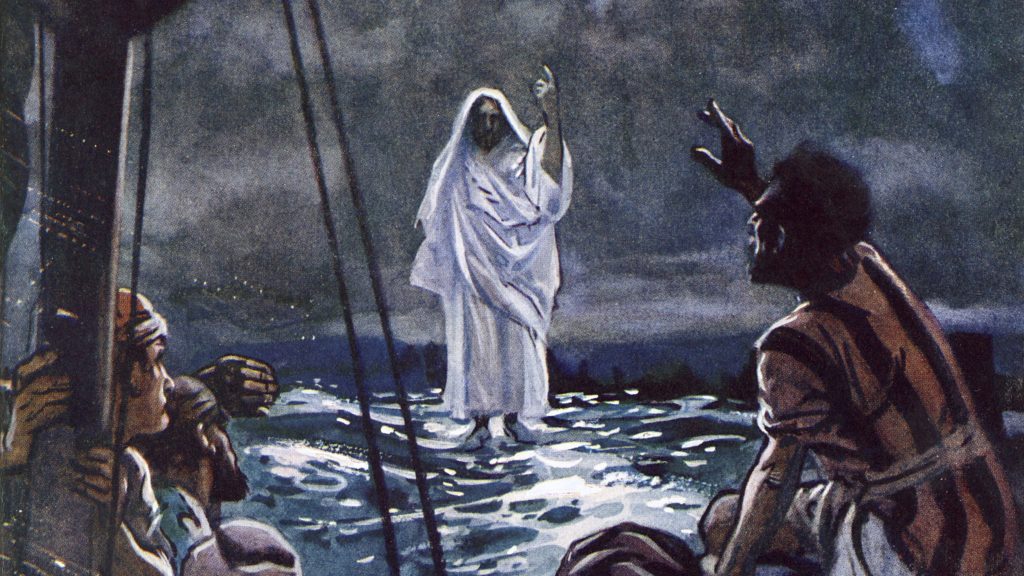
For the four weeks leading up to and going beyond Easter, let’s take a look at the life of Peter. Because he’s so often at the center of both the brightest and darkest moments in the Gospels, he has always been a source of hope and inspiration for those endeavoring to follow Jesus.
A man appeared one day at the gates of heaven. St. Peter asked him, “Did you ever do anything of particular merit?”
“Well,” said the man, “one thing does come to mind. I once came upon a group of Hell’s Angels. They had surrounded a poor, helpless fellow with their motorcycles and were about to beat the tar out of him. I ran up to the largest and most heavily tattooed of the bikers and ordered him to back off. When he didn’t, I kicked over his bike and smacked him upside the head. After that I snarled, ‘Leave him alone or you’ll answer to me!’”
St. Peter was impressed. “When did this happen?” he asked. The man answered, “Oh, a couple of minutes ago.”
Risk-taking for its own sake may seem impressive. But it’s not recommended. Life, as a matter of course, generally provides plenty of opportunities for us to take bold steps at crucial moments. The irony is that jokes about standing at the gate of heaven involve Peter (to whom Jesus gave “the keys to the kingdom”). And Peter learned far more about spiritual risk-taking than the other members of Jesus’ circle of disciples – especially in the middle of a particular night on the Sea of Galilee.
The account of Jesus walking on the water in the book of Matthew falls naturally into two parts. Today we’ll look at Peter Steps Out. Tomorrow we’ll tackle Peter Sinks Down.
The Sea of Galilee isn’t an unusually large lake. It measures 13 miles north to south and 8 miles at its widest, east to west. But it boasts unique geological features. It lies almost 700 feet below sea. Only the Dead Sea – some 104 miles to the south, at the other end of the Jordan River – sits lower at 1,300 feet below sea level. The Dead Sea is in fact the lowest point on the surface of the Earth.
The lake where Peter and his companions fished is surrounded by dormant volcanoes. Approaching weather fronts are occasionally accelerated through black basalt hills. Brief but intense storms may feature violent winds and high, choppy waves. Local legends suggested there might be a portal to hell at the bottom of the lake, allowing unfriendly spirits to rise to the surface from time to time.
For fishermen, therefore – whose job was to head out onto the lake six days a week after sunset – there was always an element of primordial fear.
John Ortberg devotes an entire book – If You Want to Walk on Water, You’ve Got to Get Out of the Boat – to an insightful exploration of just 11 verses of Scripture. He dives into Matthew 14:22-33 in order to address this question: Why would an experienced fisherman exit the safety of his boat at 3:00 am in the teeth of a fierce gale?
Peter and his companions see a figure walking toward them on the water. “It’s a ghost!” they scream. Perhaps those legends about the portal to hell are right after all.
But Jesus says to them, “Take courage! It is I. Don’t be afraid.”
The others in the boat are paralyzed. Ortberg calls them “boat potatoes.” Like so many people who are content to experience life from the safety of their couches while holding the TV remote and a large bowl of popcorn, they aren’t about to put their own security at risk.
But Peter, straining his eyes in the darkness, is different. “Lord, if it’s you, tell me come to you on the water.” In other words, I’ll come out there and join you on this impossible mission if you command me to do so.
This is not reckless posturing. In Ortberg’s words, “Matthew is not glorifying risk-taking for its own sake. Jesus is not looking for bungee-jumping, hang-gliding, tornado-chasing Pinto drivers.”
Instead, Peter gives up his seat in the boat – which appears to be the only safe place to be – because he wants to be with his master. Matthew 14:29 is one of the most empowering verses in the Bible: “Then Peter got down out of the boat, walked on the water and came toward Jesus.”
In this remarkable moment, Peter has done more than just acknowledge a conclusion about Jesus’ trustworthiness in his head. He has made a personal decision with his feet.
This naturally flies in the face of human behavior. What is far and away America’s favorite flavor of ice cream? It’s vanilla, of course. What if I choose one of those 31 varieties at Baskin and Robbins and make a mistake? It’s far better to go with the sure thing than to take a risk. Eileen Gruder suggests this is no way to live:
You can live on bland food so as to avoid an ulcer, drink no tea, coffee or other stimulants in the name of health, go to bed early, stay away from night life, avoid all controversial subjects so as never to give offense, mind your own business, avoid involvement in other people’s problems, spend money only on necessities and save all you can. You can still break your neck in the bathtub, and it will serve you right.
Life is inherently risky. Here’s the real decision that lies before us: What risk makes the most sense?
On that stormy night in Galilee years ago, Peter doesn’t hesitate. What’s his ultimate reason for stepping into the water?
Jesus is in the water.
The action isn’t in the boat. The action is wherever we see the Lord.
